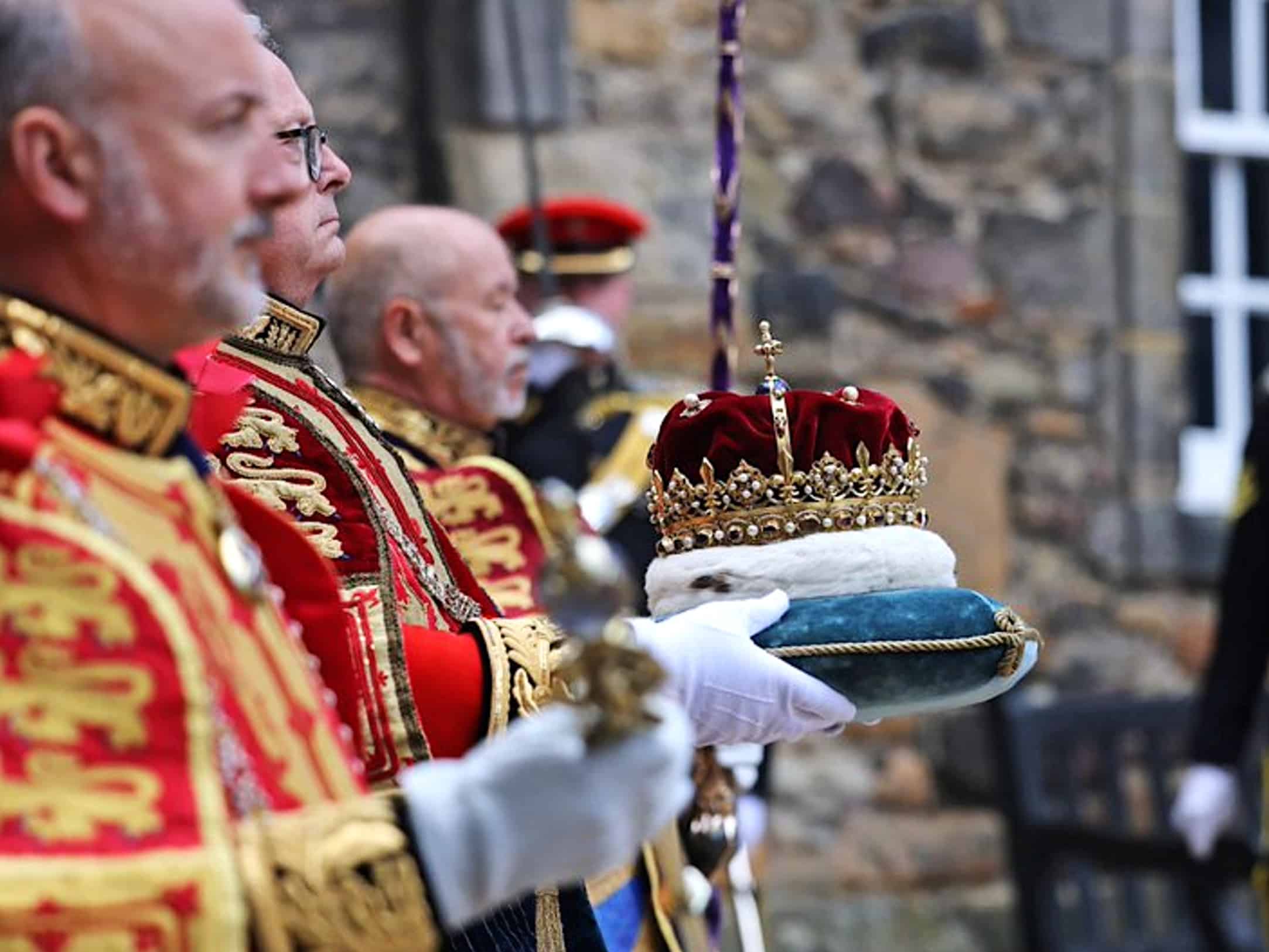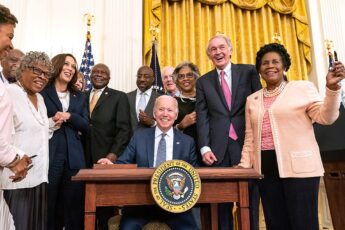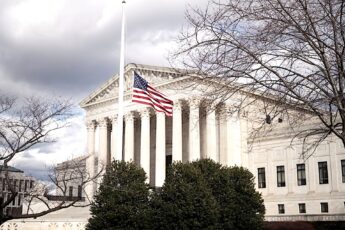Teaching the different forms of government seems easy enough – go over some definitions and provide examples, then quiz your students.
But that’s not creating any real meaning for them, especially if your high school Civics students are somewhat familiar with them already.
So, let’s do better and create fun and engaging of this standard.
Below is my dig-deeper lesson sequence for teaching the different types of government in my on-level Civics class.
But first, let’s go over the basics of these definitions and why they matter in your American Government and Civics class.
What are the Main Types of Government?
The biggest thing to stress about these definitions is that they are abstract. No one country is exactly any of these, and no two countries’ governments are alike, even if they both are labeled with the same type.
Real governments are custom blends of these and constantly change ever so slightly all the time. But these definitions are the building blocks to examining real-life examples, so they are essential to know.
Here are the most common forms of government to contrast with the US’s system of federalism.
Anarchy – No publicly enforced government; a structure with voluntary, non-hierarchical participation
Autocracy / Dictatorship – A single person with the supreme power over the government who isn’t limited by laws or elections
Confederation – A union of independent nations that come together for a common purpose or action
Direct Democracy – A system in which the people represent themselves and vote directly on all new laws and policies
Monarchy – A government ruled by a family, and the leader is predetermined through a hereditary linage
Oligarchy – A government where power rests with a small number of people
Socialism – Not a formal type of government, but a philosophy of public (government) ownership of many aspects of life
Theocracy – A government led by a religious figure
Unitary – A centralized government that makes all the decisions, and smaller regional entities exist to carry out those powers
Importance in Civics & Government Class
Students likely learned these in earlier social studies classes. Still, they need to be revisited in Civics for one big reason– to understand precisely what the United States government is, you must know what it isn’t.
All these definitions are to contrast and be non-examples of federalism.
That’s why my essential question for this topic is the deceptively simple: “What exactly is American democracy?”
If each nation is a custom-made government system, what is the U.S.’s, what is similar but not quite the same, and what is it not?
Automatically this begins to dig deeper than quizzing memorized definitions.
Fun Ideas for Teaching Types of Government
Once students are familiar with these terms, you have so many options for applying and evaluating them with real-life examples.
Here’s how I teach government systems meaningfully. At the bottom, I include practical tips for assessing students and fitting it into the larger inquiry arch of my Foundations of American Democracy unit.
1. Define the Type of Government
Incoming knowledge will vary, so an anticipatory activity like card matching is perfect for seeing what students already know.
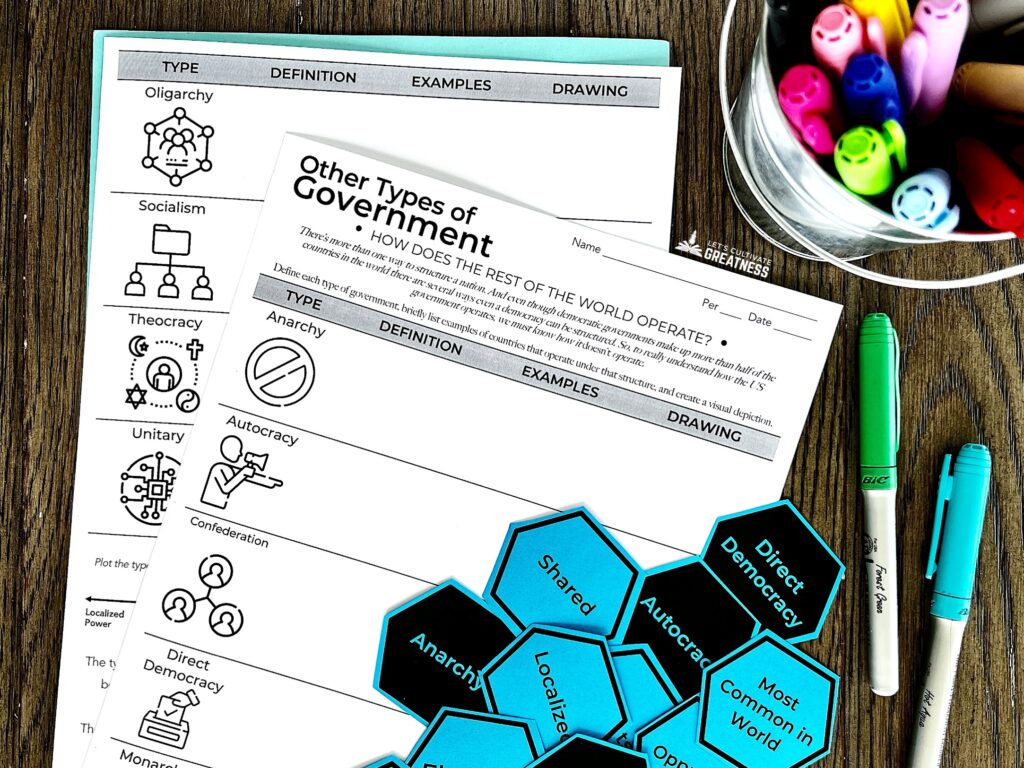
Next, share short and clear definitions. This works best as a quick lecture with guided notes for students to fill in.
2. Provide Real-World Examples of Each Type
On each slide, I include photos illustrating straightforward examples of the type of government.
For example, for monarchy, I use the last public photo of Queen Elizabeth II meeting Prime Minister Liz Truss, officially inviting her to serve in that office in September 2022.
Next, I crowdsource a few more example countries that students can think of, supplementing as needed.
Students add these 3-4 examples to their notes.
3. Create Political Cartoon Stations
For the next activity, I have gathered political cartoons of recent events that illustrate each of these government types. I place them around the room as stations.
My go-to is Daryl Cagle’s political cartoon database for finding international cartoons. Just type the form of government into the search bar.

I use a framework I call POPES for analyzing political cartoons. After practicing with a few cartoons as a class, I send them to the stations to start exploring.
The trick is not labeling the cartoons with the government type they are depicting. Afterward, students must decide which systems the cartoons are demonstrating.
4. Build Gummy Bear Dioramas
The second student-centered activity we do is my favorite! I put students into random groups of 3-4 and assign them one government system.
With a dozen gummy bears, a paper plate, and access to supplies like markers and tape, groups create dioramas of their government.
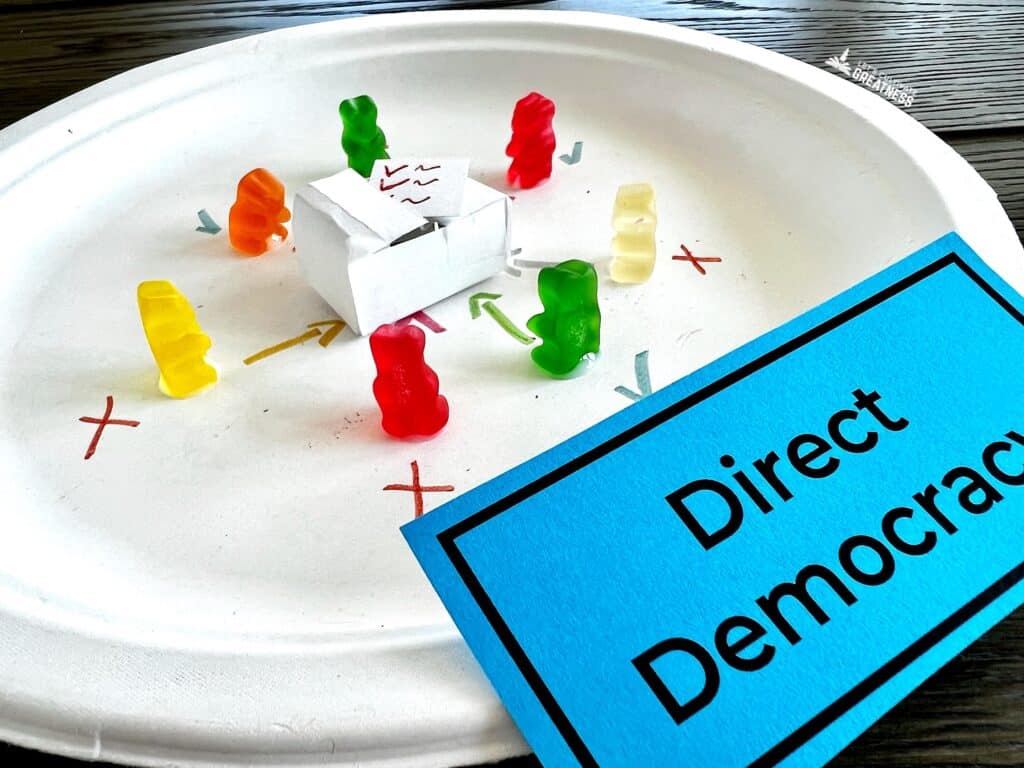
Afterward, students guess each group’s type of government. The groups share their thought processes and the details of their diorama.
5. Draw Pictures of Each Type of Government
To wrap up, students draw the government system based on everything they know—the definition, a handful of real-life examples, and the dioramas. I include a spot for these on their guided notes.
6. Create Hexagonal Thinking Displays
This is a favorite higher-level processing activity before a summative assessment. Put the government names, adjectives, and examples on cut-out hexagon shapes.
Have students work in small groups to lay them out, touching them to show a critical thinking connection. You can have students glue them onto poster paper to display. If you don’t, you can reuse them!
Assessing Student Learning
This topic is perfect for a pre-and post-quiz assessment since students will have some level of incoming familiarity. While matching definitions or examples to the types of government is an obvious way to measure growth, be sure to ask higher-level questions, too.
One way to do this is to ask questions that connect the other systems to the US’s system, like, “Which government type would be the hardest to adjust to? Which is most/least similar to the US’s?”
Or that connect to current international issues, like “Describe how one nation’s government is struggling to address a problem it’s having?”
Incorporating Inquiry & Essential Questions
Knowing what these government types are allows students to appreciate what the U.S. government actually is, and it opens things up for all sorts of inquiry.
Questions like:
If the US could adopt a little bit of one of these other systems, which should it be and why?
Do certain government types work better in different situations, or is there one universal best type?
The question that guides my Foundations of American Democracy unit is, “How do we define our American democracy?” These government types are part of the answer, along with the founding documents and the Constitutional principles.
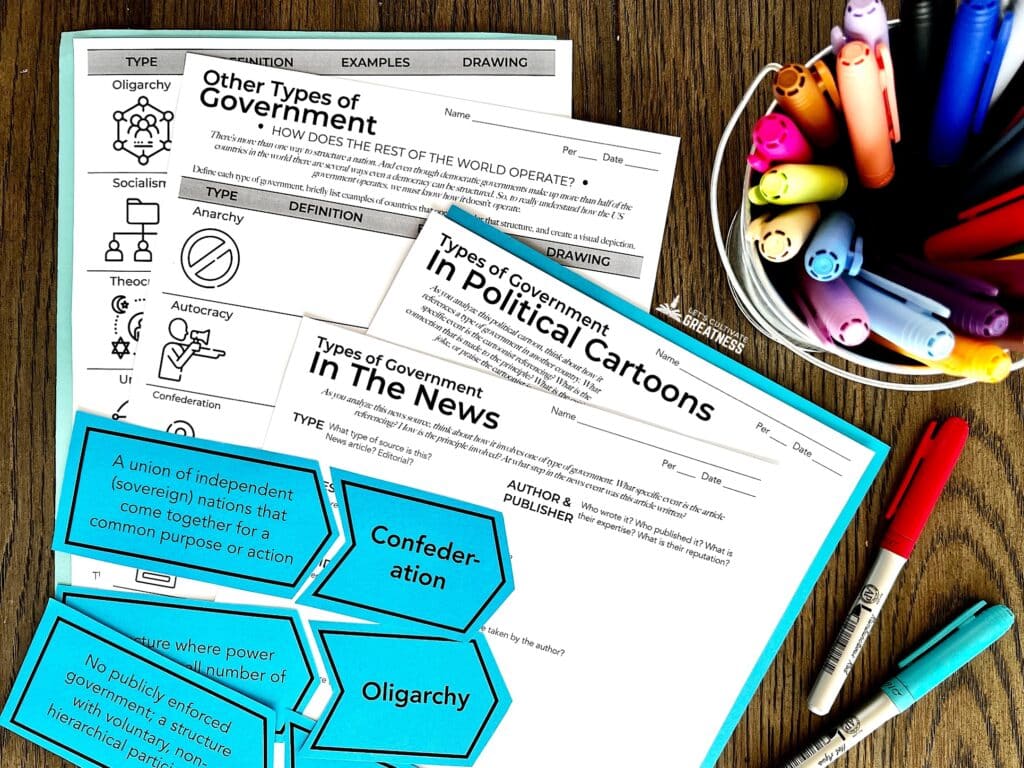
Grab my Types of Government activity kit for the done-for-you activities described here. If you want to explore how to fit this topic into your Civics class, check out my Foundations of American Democracy unit.
Feature image photo credit: via UK Crown, the crown of Scotland being presented to King Charles III for the Scottish Coronation ceremony in July 2023.


